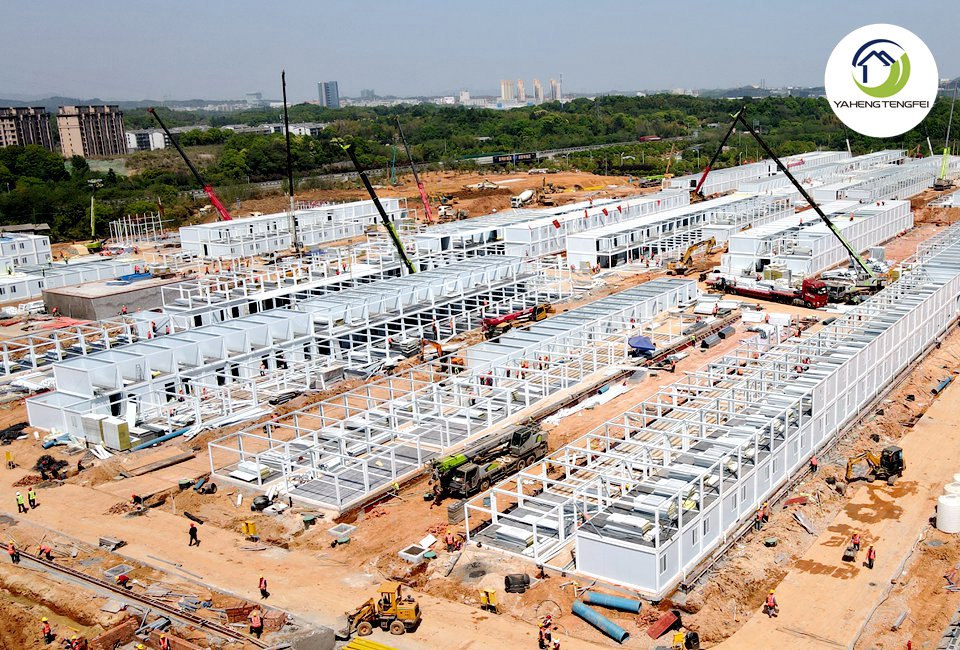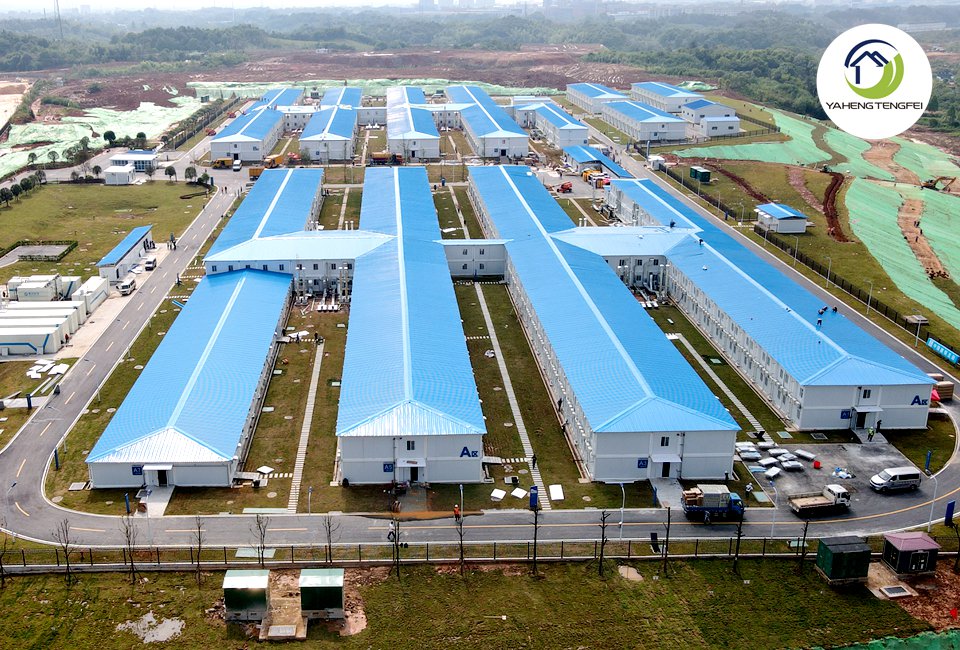
1. Advantages of Prefabricated Construction
Energy-saving and environmentally friendly: Prefabricated construction can be disassembled and reassembled, with a modular design that allows flexible configuration, reducing the demand for raw materials, and having a lifespan of over 10 years.
Quick installation: Prefabricated construction, pre-fabricated in factories, can be directly transported to the construction site for installation, saving time and shortening the construction period. For example, a three-person team can install 180 square meters of a folding container in one day, significantly faster compared to traditional cement pouring, making it suitable for construction site dormitories, medical aid, and military camps.
Shortened construction period: Prefabricated construction eliminates traditional bricklaying and plastering processes, and this construction method is less affected by weather conditions, allowing for operations day and night, significantly reducing the construction period.
2.Disadvantages of Prefabricated Construction

Inflexible to temporary changes in requirements: Prefabricated components are produced according to the design, making it challenging to make alterations to the layout or add new elements during installation. Therefore, it is essential to communicate the design plan in advance.
Requires specialized personnel: The production and installation of prefabricated components require skilled technical personnel to ensure the quality and safety of the building.